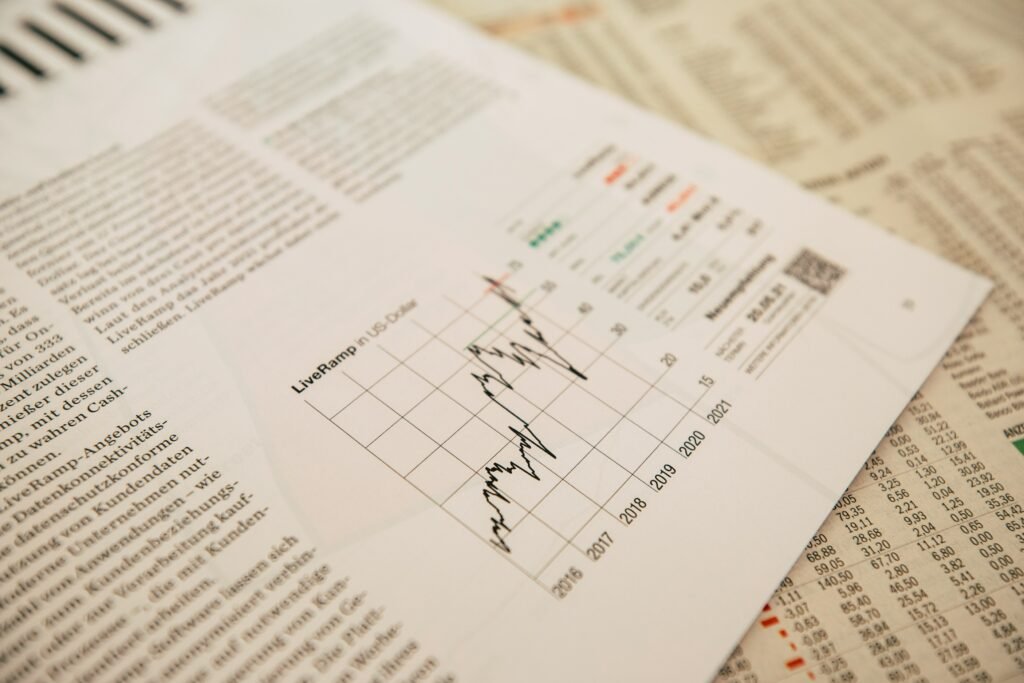The world of investing can be exciting, but it can also be risky. Prices go up and down quickly, and things don’t always go as you planned. That’s why every investor whether new or experienced—needs to understand risk management.
Risk management is the art of protecting your money while still trying to grow it. It helps you make smart decisions, especially during hard times in the market. In this guide, we’ll talk about why risk management is important and how you can use it to become a better trader or investor. Don’t worry—I’ll explain everything in simple words and give examples along the way.
Why Risk Management Matters
Imagine you have some money and want to invest it to earn more. You buy a stock or cryptocurrency, hoping the price will go up. But what if the price drops instead? If you’re not prepared, you could lose a lot or even all of your money.
That’s where risk management comes in. It helps you avoid big losses and stay in control of your money, even when the market gets wild. Risk management is not about avoiding risk completely. It’s about learning how to handle it in a smart way.
Some people think making big profits is all about taking big risks. But the truth is: the best investors focus on protecting their money first. Then, they look for chances to grow it.
What Is a Volatile Market?
You may hear people say the market is “volatile.” That just means prices move a lot sometimes up, sometimes down often very quickly. Volatility can happen for many reasons, such as:
- News events (like elections or wars)
- Economic changes (like inflation or interest rate hikes)
- Company problems (like poor earnings reports)
In a volatile market, prices can jump high or fall low without much warning. This can make investing stressful. But if you use risk management, you don’t need to be afraid of volatility you’ll know how to protect yourself.
Key Risk Management Strategies
Let’s explore some of the most common and helpful risk management tools. These are the same methods many professional traders use.
1. Set a Risk-Reward Ratio
A risk-reward ratio helps you decide whether a trade or investment is worth it. For example, let’s say you risk losing $10, but you might make $30. That’s a 1:3 risk-reward ratio.
Most smart traders look for trades where the reward is at least twice or three times the risk. This way, even if they lose sometimes they can still make money in the long run.
Tip: Before taking any trade, ask yourself:
“How much can I lose?”
“How much can I gain?”
If the reward is much bigger than the risk, it might be a good trade.
2. Use a Stop-Loss Order
A stop-loss order is like an emergency exit from your trade. It automatically sells your investment if the price drops too much.
For example, if you buy a stock at $100 and set a stop-loss at $90, the stock will be sold if the price hits $90. This way, you only lose $10 instead of much more.
Stop-loss orders:
- Protect you from big losses
- Help you stick to your trading plan
- Take emotions out of your decision
Many beginners don’t use stop-losses and end up losing a lot. Don’t make that mistake!
Read more about What is Stop Loss
3. Diversify Your Portfolio
Diversification means spreading your money across different types of investments. Don’t put all your money into just one stock, one coin, or one company.
For example, instead of investing all your money in one tech company, you could:
- Invest in a tech company
- Buy a few energy stocks
- Hold some money in cryptocurrency
- Put some in a savings account
If one part of your portfolio loses value, the other parts might stay strong. Diversification helps you avoid losing everything at once.
4. Only Risk What You Can Afford to Lose
This is very important: Don’t invest money you need for basic needs like food, rent, or school. Only use money you can afford to lose without affecting your daily life.
Some people get excited and invest too much. When the market drops, they panic or go into debt. Avoid this by being careful and realistic.
5. Keep Emotions Out of It
Markets move fast. When prices fall, fear kicks in. When they rise, greed takes over. Emotional decisions often lead to bad trades.
Good risk management helps you:
- Stay calm
- Stick to your plan
- Avoid chasing profits or panicking over losses
Make your trading plan before you enter a trade, and follow it no matter what the market does.
6. Review and Learn from Every Trade
After each trade, ask yourself:
- What did I do right?
- What could I have done better?
- Did I follow my risk rules?
Keeping a trading journal can help. Write down every trade, your plan, and the result. This helps you learn faster and avoid repeating mistakes.
How Risk Management Helps in Real Life
Let’s say John is a beginner trader. He invests $500 in a stock. The price drops, but he has no stop-loss and hopes it goes back up. It keeps dropping, and he loses $400.
Now let’s imagine Sophia, who also invests $500. But she uses a stop-loss at $450 and has a 1:3 risk-reward plan. If she wins, she gains $150. If she loses, she only loses $50. Even if she wins just half of her trades, she’ll still make money over time.
That’s the power of smart risk management.
Building a Safe and Strong Future
Risk management isn’t just about today’s trade it’s about building a better future. When you protect your capital (your money), you have more chances to grow it slowly and safely. It also gives you peace of mind.
Many successful traders say their number one goal is not to make the most money, but to protect their capital. Once you learn to manage risk, profits often follow.
Final Thoughts
The market will always be unpredictable. Prices will go up and down. But with the right risk management tools, you stay in control.
Here’s a quick summary of what we learned:
- Always use a risk-reward ratio
- Set stop-losses to protect yourself
- Diversify your investments
- Never risk more than you can afford
- Keep emotions out and follow your plan
- Learn from each trade
Whether you’re new to trading or already have some experience, these steps will help you protect your money and grow with confidence even in tough times.Are you ready to trade smarter?
Start with risk management and you’ll build a safer, stronger path toward success.

